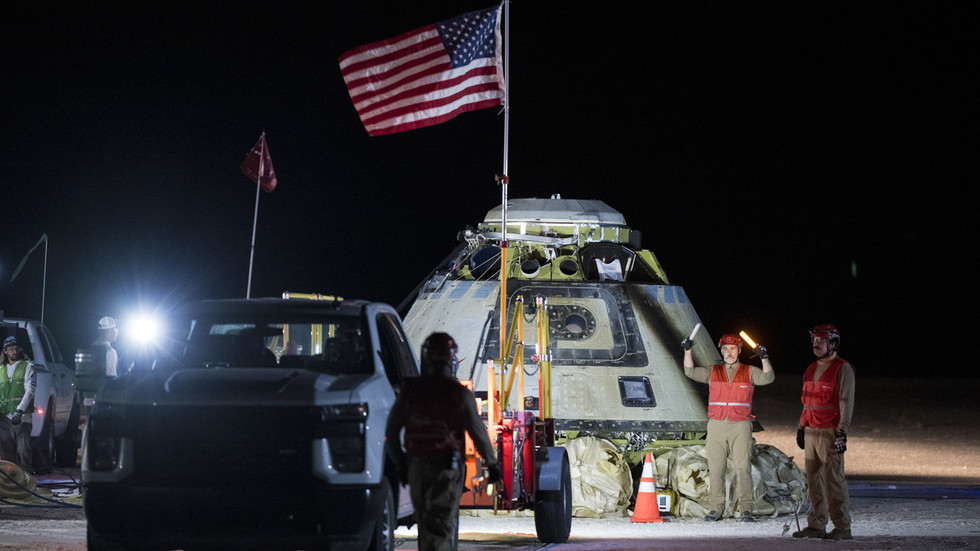Boeing is reportedly evaluating the possibility of divesting its NASA business, which includes the troubled Starliner program and its support operations for the International Space Station (ISS). According to a recent report from The Wall Street Journal, sources indicate that Boeing may retain its involvement in other space initiatives, such as the Space Launch System (SLS), a massive launch vehicle vital for NASA’s Moon exploration objectives. Although the SLS successfully completed its first flight two years ago, its production has been plagued by various challenges, including quality control issues. Meanwhile, the Starliner spacecraft, designed to ferry crews of up to seven astronauts to and from the ISS, has faced a series of setbacks since its operational debut was initially scheduled for 2017. Recent tests culminated in a partial failure, forcing the company to return the spacecraft uncrewed to Earth, highlighting the struggle Boeing faces with its space projects.
The potential divestiture aligns with the strategy outlined by Boeing’s new CEO, Kelly Ortberg, who aims to reorganize the company and mitigate its financial losses. This proactive approach reflects an ongoing internal assessment of the firm’s vast array of business ventures, and it appears that the company had engaged with potential buyers even prior to Ortberg’s ascent to the CEO role in August. He acknowledged that significant changes are necessary to position Boeing for a more stable financial future, indicating a willingness to revamp or part ways with underperforming sectors. His statements resonate with a larger theme of corporate restructuring, suggesting that Boeing’s focus will lean towards consolidating its strengths in military and commercial aircraft while selectively moving away from less-performing contracts.
Ortberg’s comments during a recent conference call with analysts and investors underscored the corporation’s need for a comprehensive overhaul. He asserted that Boeing might benefit from narrowing its focus, emphasizing the importance of quality over quantity in terms of contract engagements. Ortberg’s candid acknowledgment of the company’s problematic contracts reveals a deep understanding of Boeing’s current challenges. By prioritizing fewer, more manageable contracts, he suggests that the company could ultimately operate more effectively. This vision marks a significant departure from Boeing’s previous strategy, which embraced a wider array of projects, many of which have culminated in costly overruns and delays.
Boeing’s ongoing financial turmoil has been exacerbated by multiple factors. The company’s defense and space endeavors have been persistently hindered by budget mismanagement and project inefficiencies. At the same time, production of airliners has stalled amid a prolonged machinists’ strike, further complicating the company’s operational capabilities. This tumultuous backdrop has pressed the need for a strategic reassessment of Boeing’s business model, as maintaining profitability becomes an increasingly strenuous task. Ortizberg’s newly articulated priorities signal a willingness to confront these challenges head-on, aiming to restore Boeing’s reputation as a leader in aerospace manufacturing.
While the prospects of selling the Starliner program and related NASA operations may raise concerns about Boeing’s long-term commitment to space exploration, it might serve as a necessary step toward rejuvenating the company’s financial health. The Starliner program’s problematic history raises critical questions about its viability as a continued investment. Additionally, the need for robust management practices within such high-stakes sectors is paramount, particularly with the potential risks involved in spaceflight. By offloading less promising endeavors, including Starliner, Boeing could free up valuable resources and redirect its focus to more successful projects, including those that align closely with its core competencies.
In conclusion, Boeing’s consideration of divesting from its NASA-related operations and the troubled Starliner program reflects a broader strategy initiated by new leadership in recognition of pressing financial realities. By emphasizing quality over quantity and seeking to trim less successful ventures, the company aims to restore its financial health and operational efficiency. This proactive approach signifies a crucial juncture in Boeing’s evolution as it grapples with longstanding issues in its space and defense divisions while attempting to emerge from financial distress. Ultimately, the future of Boeing’s space initiatives will hinge on its ability to navigate these necessary changes while ensuring its foundational businesses maintain robust growth.

